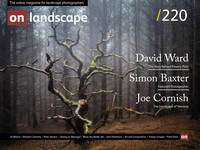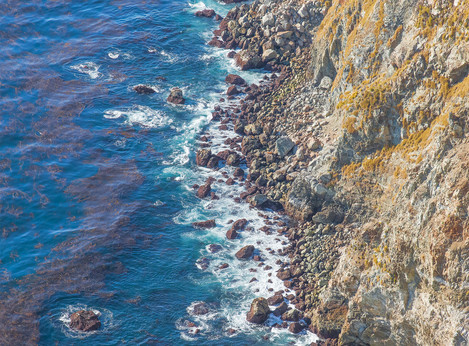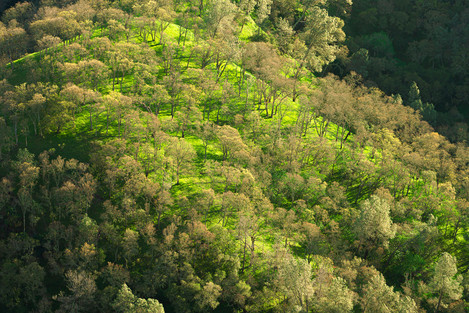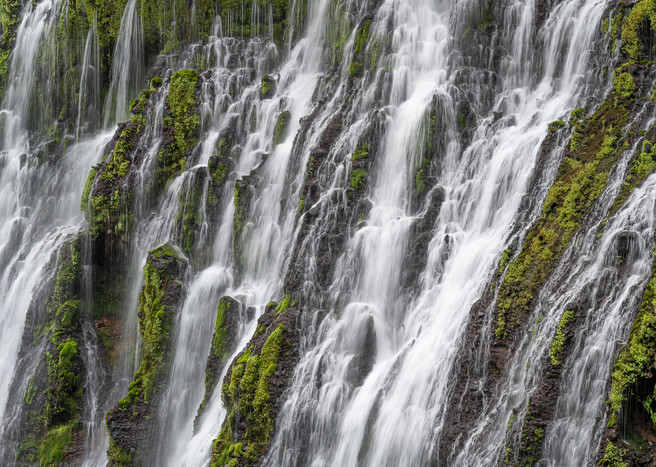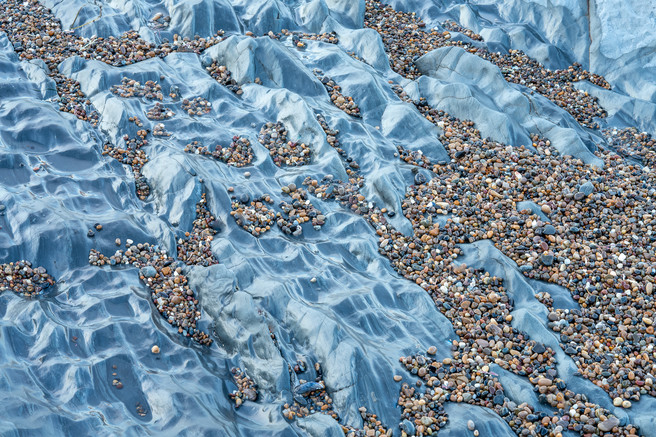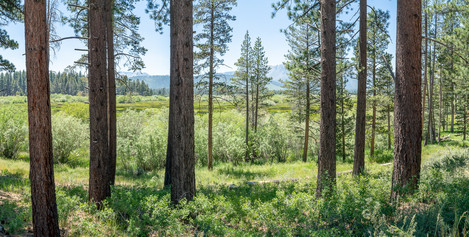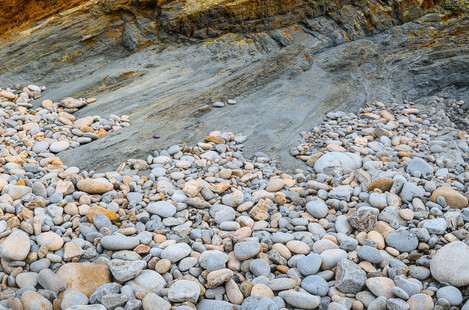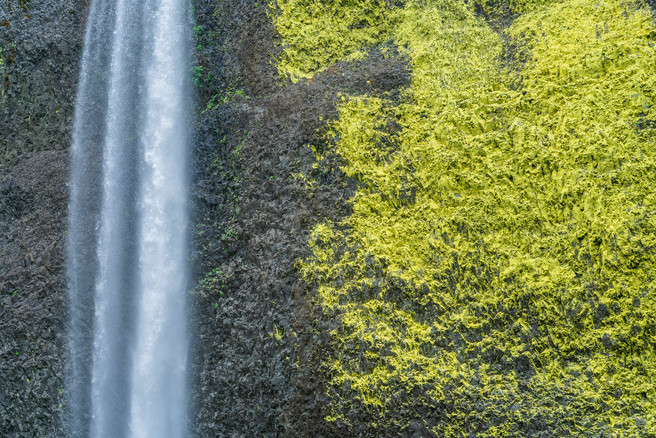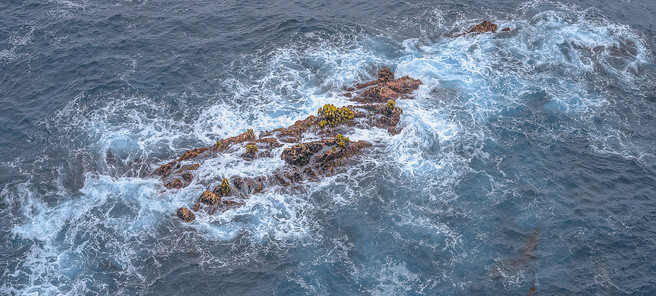A Quest to Characterise Their Connection to Self

Franz Gisin
I am a retired California-based applied mathematician turned intimate landscape and nature photographer. My career was immensely satisfying from an analytical perspective. But now, in the autumn of my life, it is time to throttle back the left side of my brain. And give the right side more opportunities to engage in creative endeavours.
franzgisinphotography.myportfolio.com
Life stands before me like an eternal spring with new and brilliant clothes. ~ Mathematician and Physicist Carl Friedrich Gauss
It was 2am in the morning. A few days earlier I had downloaded the last thirty issues of On Landscape. And now I was scrolling through them page by page. Separating the images into two categories depending on how much time I spent looking at them. This two-category sorting technique worked brilliantly on my own images. But I wanted to test it out to see if it would also work on images not mine.
In the first “not my style” category were images whose viewing times lasted less than a second or so. In the second “keeper” category were images I viewed much longer. Often going back to view them several times more before moving on to the next issue. Many of these keepers were as fresh on the fifth or tenth view as the original view. Prompting me to dig deeper and find out why these keepers stay so well preserved across so many viewings. Hoping in the process to discover some of the secrets to making meaningful images.
At the beginning, I had no clear idea of what factors were dominant contributors. Potential candidates included camera and lens configurations. Distance from home. Skill in navigating a tangled reductionist-centric maze of compositional rules. Industrial-strength post-processing machismo. And creativity-inspired uniqueness and novelty? But this exponentially expanding list soon became too impractical.
So, I started to work backwards. Studying batches of existing keeper images using a “forest in the trees” mindset. I found many keeper traits anchored in my own eccentricities. Something I had already anticipated. I also encountered a few pet peeve gatekeepers that eliminated potential images. Which was a bit of an awkward surprise. Many traits became obvious only after their discovery. Hindsight working its revealing magic.
And on that introductory note, here are four of my most important keeper image traits: colour; curiosity; details; and title.
Colour
I can still remember in vivid detail, peeling my first colour print off a newly bought Kodak Rapid Colour Processor Model 11. It was around 1972, give or take a year or two. I had strapped it to two wooden slats straddled across the bathtub. The memory of that pivotal moment is the source for the quote at the beginning of this article.
With each additional colour print, I became more convinced that colour is where I want to be. Where I am supposed to be. Where I need to be for the rest of my life. A decision I have never once regretted making.
One of my favourite colour images is "Horizontal Meets Vertical". In this image, the bright surf acts like a highway dividing line. Ensuring two incompatible ecosystems get equal, collision-free billing. On the left, the refreshing cool blues of the ocean. On the right, the warm sun-loving oranges and yellows inhabiting the near-vertical cliffs. A natural for the expressive power inherent in complementary colours.
The "Almost Dinner Time" image is another example where colour plays an essential role. Here we have a late afternoon sun streaming through leafless oak trees still hesitating to enter spring. Paired with green grasses that got a head start at the beginning of the winter rains. A harmonious collaboration only visible when viewed through analogous RGB colour wheel hues.
Curiosity
Many keeper images contain a concoction of intriguing elements worthy of further inspection. Often bordering on the chaotic. Which is the preferred way the natural world presents itself to us anyway. Always a bit rumpled and dishevelled. Like the random musings, our minds like to engage in when we are in a happy and contented state of being.
These elements have the capacity to expose my innate curiosity. Not the “pixel-peeping” kind only capable of focusing on the craft of photography. But the kind that consistently spawns why, how, where, and what questions. All worth scooping up with the click of a camera shutter.
One of my favourites is the "Forest Oasis" image. A prime example of the complex patterns that permeates much of nature. It did not take long after I arrived at this location, for the questions to start flowing. Do the self-similar rivulets forming the waterfalls have a well-defined fractal dimension? What kind of geology allows water to seep out across the entire cliff side? How many different plant species live between the rivulets? Questions that elevate my awareness of nature’s tenacious interconnectedness. Making me feel more alive. And in the process enhancing my viewing experience far beyond superficial eye candy.
Once, when viewing the image "Nomadic Pebbles", the following questions arose. Were these pebbles destined to become sand? If so, how much longer would it take? Ten thousand years? More than a million years? During a later viewing, a second set of questions stepped forward. How did these pebbles end up at this location? If not the blue bedrock, then from where? How long ago? Is this their final destination or a temporary stop along the way?
Both images prompted internet searches that spawned more curiosity than answers. A sure-fire guarantee that extra viewings will never decrease the image's net worth. Continuing instead to enrich and deepen my appreciation of nature's inner workings.
Details
I often encounter what I call fireworks images. Images streamlined for a rushed sugar-high fast-food kind of visual experience. Overloading all my senses the instant they appear on my computer screen. Only to reverse direction and immediately rush back into a forgotten oblivion.
But I also encounter keeper images resisting these instant gratification spikes. Urging me to slow down. On many of these occasions, I often take time out to brew a fresh cup of coffee. Augment it with a generous slab of fresh-out-of-the-oven pumpkin or banana nut bread. Before settling down to uncover additional interpretations and insights overlooked during previous viewings.
“Slow photography” should not be confined to the image capture end of the pipeline. But also encompass the visual interactions with the polished image at the other end. Easy to do if the image contains enough engaging details to make it impractical to digest in one viewing.
The image "Next Generation" is a perfect example. One could crop the left and right sides of the image to the point where only a thin sliver of the centre remained. Squeezing out everything except the twins taking centre stage in the image. But in the process, one can lose the structural details that bestow it with a sense of place. Details such as dappled sunlight strolling through the partially shaded forest. Wrinkled tree trunks sporting ages capable of outlasting many generations. A verdant meadow brimming with macro opportunities. Ambitious mountain tops sporting spectacular bird-eye views. And a bluer than blue sky primed and waiting for an unobstructed milky way to circle above the horizon.
The subject of the "Ambition" image has a long history. Before I settled on applied mathematics, I also considered a career in geology. And while it never happened, geology is still a latent force in many of my intimate landscape images. In this image, I was captivated by the diversity of stones inching up steeply inclined layers. Stones sporting brown and blue hues. Rough and smooth surfaces. Round and flat shapes. Some even pocketed with mysterious holes. A pleasing chaos of engaging patterns and textures begging for closer inspection.
A Title
I prefer to launch an image into the public world armed with a title. A small token of appreciation designed to give it a head start as it embarks on a life of its own. When selecting titles, I lean towards expressions reflecting memorable facets of my life. Finding the right title always culminates in an exhilarating feeling of completion. A guaranteed ‘This is as good as it gets - it does not get better than this!’ moment every time.
The image "Curiosity" had another contender. "I Dare You to Get Closer". Both capable of influencing the mindset of the viewer when they first enter the image. Both had equal quantities of pluses and minuses. Requiring the flip of a coin to finalise the decision. Both titles gave me the freedom to strengthen the visual weight of the lichens. Increasing their area to better balance it with the much brighter waterfall.
The title "Thrashing About" has an interesting etymology. It was how one of my mathematics professors characterised students during final examinations. During my life, I found many other applications for these versatile words. Including the title to this image and the revision process used to clean up this article.
Summary
There you have it. Four personal traits which consistently find themselves embedded in my keeper images. I’m confident the future still holds more traits worthy of discovery. But for now, they are more than adequate to help evolve my photography in the right direction.
Acknowledgements
The idea for this article sprouted from Allister Benn’s YouTube video, “Landscape Photography | Composition | Why, NOT HOW...” It's well worth watching.

